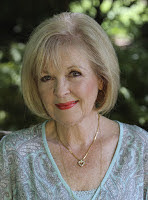Edie Melson's Blog, page 159
June 25, 2021
The Number One Way to Alienate Your Readers

by Zena Dell Lowe @ZenaDellLowe
I recently received a private message from a writer friend who said she needed my help. Keep in mind, this gal is already a competent writer. She’s put in the time. She’s learned the tools of her trade. Nevertheless, people just aren’t resonating with her material on an emotional level. She wanted to know why. What’s the root problem? More importantly, can it be fixed?
It's often difficult to put one’s finger on exactly what is and isn’t working in a story. We generally start by trying to fit the problem into one of two categories. Is it a technique issue or is it a content one? Is the writing just not that good or is it the quality of the story itself? This two-pronged approach can seem useful at first, but in many ways, it’s an arbitrary construct. The truth is that content impacts technique and vice versa, so it’s nearly impossible to separate the two, especially when they work together to make up the whole.
In other words, evaluating story feels sort of like opening a Russian doll. Inside the first doll is a second doll and so on and so forth, until you finally arrive at the last, tiny doll, the prize at the center of the whole thing. And each doll is its own separate entity, and yet, each is a part of the whole. One doll cannot be separated from its fellows without the whole thing falling apart, and all of the dolls belong together, collectively making up a single entity, which is the final product we’ve come to know as a Russian doll.
This same principle applies to story. Each story is the culmination of a lot of different component parts that all must add up together to make a solid unified whole. If one of the component parts is missing, it affects the entire thing, which ultimately means that the entire story doesn’t work. This is why it becomes so overwhelming for us to identify and fix the root problems in our stories. How do you isolate just one strand in a sea of overlapping and interconnected parts? It just feels so big, so hopelessly impossible, that it’s tempting to give it all up.
However, this would be a mistake, because more often than not, the writer is just on the cusp of that breakthrough, that A-HA moment that’s going to make all of the difference in their work. Furthermore, we can actually narrow down the playing field and learn where to look. Thus, instead of giving up and throwing in the towel, I suggest we dig deeper. So long as we’re willing to engage in honest self-appraisal and revise our tactics accordingly, this is a problem that we can rectify.
Now, I’ve had the honor of evaluating a great number of stories over the years, and what I’ve found is that while it's often difficult to put your finger on exactly what's wrong in a story, it almost always comes down to the main character. Somehow, the writer makes the mistake of creating characters who are unbelievable or who lack credibility, which inevitably alienates their readers.
The most common mistake that writers make to alienate their readers:
Creating characters who are unbelievable or who lack credibility.
When readers aren’t connecting with a story, it almost always means there’s something wrong with the main character—something that keeps the audience at bay. If we don’t care about the main character, we’re surely not going to care about the story.
We have to remember that character IS story. The plot unfolds as a result of the choices a character makes. Moreover, the heart of every story is a personal paradox, meaning that it’s all about whether or not your main character resolves whatever wound or damage he or she needs to overcome over the course of the telling. Furthermore, there’s nothing new under the sun. Every story that could ever possibly be told has already been told in some way. The audience has seen it all before. So, it's not about the story itself. It's about WHO that story is happening to that matters. That’s what makes your audience care. When we do the hard work of self-evaluation, the first thing we have to do is look hard at the characters we’ve created. Are they captivating our audience? How are they falling short? What’s the litmus test here?
In a nutshell, it all comes back to this issue of telling the truth. The writer’s job is, first and foremost, to tell the truth about the world as we know it, and about people as they really are. The acid test of how well you’ve accomplished this is always and forever the same: does it ring true to the audience?
There’s a difference between characterization and true character. Characterization is the list of qualities that I could come up with about a person simply by watching and taking notes. These are your character’s physically observable attributes, like what they look like, where they go for lunch, who they spend time with, etc. True character, on the other hand, is revealed by the choices a character makes under pressure.
This is important because the characterizations you give your characters must make sense in terms of what your character accomplishes in the story. You must give your characters the characterizations necessary for them to be able to pull off whatever it is that they’re supposed to be able to do. They must be old enough or young enough, or worldly or naive enough, or confident or insecure enough, to say or do whatever it is that they say or do, all in the right proportions. The upshot is that we have to believe a character could or would do whatever they end up doing, which means they need to possess the right characteristics to convince the audience that their actions are credible.
If your story doesn’t seem to be resonating with your readers, start here. Check to see if there’s anything about your characters that just seems impossible for the audience to believe. Violating credibility is the fastest way to disillusion your audience. We want to believe, so make sure you’ve given us everything we need to be able to willingly suspend our disbelief.
For more tips like this, check out The Storyteller's Mission with Zena Dell Lowe, a podcast for artists and storytellers about changing the world for the better through story. New episodes available every Thursday on the podcast app of your choice. www.thestorytellersmissionpodcast.com.
TWEETABLEThe Number One Way to Alienate Your Readers - @ZenaDellLowe on @EdieMelson (Click to Tweet)
 Zena Dell LoweAward-winning Filmmaker, Speaker, Teacher, Story Coach, and Podcast Host
Zena Dell LoweAward-winning Filmmaker, Speaker, Teacher, Story Coach, and Podcast Host Zena has worked professionally in the entertainment industry for over 20 years as a writer, producer, director, actress, and story consultant. Zena also teaches advanced classes on writing all over the country. As a writer, Zena has won numerous awards for her work. She also has several feature film projects in development through her independent production company, Mission Ranch Films. In addition to her work as a filmmaker, Zena launched The Storyteller’s Mission with Zena Dell Lowe, a podcast designed to serve the whole artist, not just focus on craft. In 2021, Zena launched The Storyteller’s Mission Online Platform, where she offers advanced classes and other key services to writers. Zena loves story and loves to support storytellers. Her passion is to equip artists of all levels to achieve excellence at their craft, so that they will truly have everything they need to change the world for the better through story.
To find out more about Zena or her current courses and projects, check out her websites at WWW.MISSIONRANCHFILMS.COM and WWW.THESTORYTELLERSMISSION.COM
June 24, 2021
5 Important Elements to Include in Your Next Blog Post

by Lori Hatcher @LoriHatcher2
Blogging continues to be one of the best ways to connect with your audience, build a platform, and refine your writing. Whenever I coach new writers who are serious about growing as a writer, I always recommend blogging.
Whether you’re a new blogger or an experienced one, you want to create posts that engage your readers and accomplish your writing goals.
Include These Five Elements in Every Post
1. An engaging title.
The title is the front door to your blog post and, often, your website and ministry. It should seize your reader and inspire curiosity or interest. It should scream, “Read me!!” Oftentimes bloggers find titling the hardest part of writing. To craft a title that lures your reader in, try these strategies:
Use a question: Would You Like to Earn 20K a Month?Tap into a felt need: Discover How to Have a Peaceful HomeUse numbers: 10 Reasons Why the Cowboys Are Better than the RedskinsMake a promise: 5 Ways to Fight Spiritual Discouragement2. A gangbuster first line and first paragraph
Your first line and first paragraph should, as some have said, grab your reader by the throat and not let go. If the title is the front door, the first line and first paragraph are the entryway. For a reader, the door is still open. The first line and paragraph will help them decide whether to come in all the way or turn tail and run before it’s too late. Don’t waste the opportunity.
“It was a bright cold day in April and the clocks were striking 13.” 1984 by George Orwell“The past is a foreign country. They do things differently there.” The Go-between by L.P. Hartley.“This is my favorite book in all the world, though I have never read it.” The Princess Bride by William Goldman3. Engaging content
Your subject should be reader-focused and helpful. Seek to provide excellent and unique content. If you’ve read a post on the subject recently, don’t write about it. Or seek a different angle. Look for that special something that will add value, teach a new fact or skill, or inspire in new ways. To do this, don’t rush. Consider your subject from all directions. Turn it upside down. Ask the questions your readers are asking and seek to answer them.
4. Internal links
To grow your blog, you need to keep your reader on your site as long as possible. You can do this by adding internal links to other posts on the subject. You can refer to these within the body of the post (I share more about how to pray for unbelievers HERE) or at the end (For further study on hearing from God, click HERE to read, “How to Know God’s Calling You”). The more related content you can provide your readers, the more they will see you as a valuable, go-to source for information. This will motivate them to linger, return, and share your blog with others.
5. Engaging, appropriate photos
Blog readers are lazy readers. They’re easily overwhelmed by long paragraphs and blocks of uninterrupted text. Beautiful photos appropriate to your subject can be a visual resting spot. Share permission-free pics from Pixabay or Unsplash or create memes with your post title and your website/domain. These images make sharing easier, too, as you can use them on Facebook posts. Studies show people are much more likely to click on a post with an image than one with text alone.
As writers, it’s easy to focus on the content of our blogs without giving much thought to the accoutrements. We tend to think of them as extras or items of lesser importance. Without the embellishments, however, a reader may not stick around long enough to discover the value you offer within your post. The next time you sit down to format a blog post, I hope these five tips will give your upcoming posts pizazz, pop, and power.
Now it’s your turn. What element do you find important in a great blog post? Leave a comment below and share your thoughts.
TWEETABLE
 Lori Hatcher loves God even more than she loves chocolate—and that’s a lot. Since He saved her at age 18, she’s been on a relentless journey to know and love Him more. Her deepest desire is for others to join her on the journey. As an author, blogger, writing instructor, and women’s ministry speaker, she writes for Our Daily Bread, Guideposts, Revive Our Hearts, and Crosswalk.com. She’s written three devotional books, including Refresh Your Faith, Uncommon Devotions from Every Book of the Bible, and Hungry for God…Starving for Time, Five-Minute Devotions for Busy Women. Connect with her at www.LoriHatcher.com or on Facebook, Twitter (@lorihatcher2) or Pinterest (Hungry for God).
Lori Hatcher loves God even more than she loves chocolate—and that’s a lot. Since He saved her at age 18, she’s been on a relentless journey to know and love Him more. Her deepest desire is for others to join her on the journey. As an author, blogger, writing instructor, and women’s ministry speaker, she writes for Our Daily Bread, Guideposts, Revive Our Hearts, and Crosswalk.com. She’s written three devotional books, including Refresh Your Faith, Uncommon Devotions from Every Book of the Bible, and Hungry for God…Starving for Time, Five-Minute Devotions for Busy Women. Connect with her at www.LoriHatcher.com or on Facebook, Twitter (@lorihatcher2) or Pinterest (Hungry for God).
June 23, 2021
Writing Dreams & Plans

by Henry McLaughlin @RiverBendSagas
2021.
A year many of us longed for as 2020 dragged on and on and on. Now it’s here, and I suspect some of us are not all that thrilled with the way it’s started out. And it’s too late to reboot. We’re stuck with it.
But that doesn’t mean we’re stuck with our lives. Yes, things seem just as uncertain as they did last year or last month.
We have dreams, and we don’t have to give up or compromise on them. If we’ve been in relationship with God, he has dreams for us. They may be better than what we have in mind. In fact, they are better than anything we could think of.
The Bible tells us he gives us the desires of our hearts. Psalm 37:4 NIV: Take delight in the Lord, and he will give you the desires of your heart. There are times this verse means he gives us what we desire (as long as it agrees with his Word). Other times, he places in our hearts what he desires for us or through us. In these instances, he also gives us the ability and resources to fulfill them.
Questions to Ask and Pray Over
Take a moment to meditate on what your dream is right now. Ponder and pray over it. Ask God if it’s from him. Answer the following questions to determine if it’s from God’s heart, your heart, or last night’s anchovy pizza.
Does it bring joy to our heart? Is it something we get excited about? Can we imagine it fulfilled and foresee the benefits it will bring to people as well as the blessings it will bring to us?
Do we have the energy for it? Does it get our adrenaline flowing? Can we visualize ourselves putting in the time and physical and financial resources to achieve it? Do we have faith God will provide all we need to achieve it? If we don’t see God as our provider of everything, we are in deep trouble because we can’t do it on our own.
Do we have the time for it? Many of us have lots of desires we’d like to pursue, “if I could only find the time.” The reality is we never “find” the time. We make the time for what’s important to us. We make the time, even if we have to go after our schedules with a baseball bat. We carve time out of our day and dedicate these minutes and hours and days and weeks—and even years—to pursuing our goals.
Does the dream give direction to our life? Do we wake up every morning with purpose and goals because God has given us a desire that requires focus and intentionality? He will call us to do more than we ever imagined. And he will also give us the ability to do it as long as we do it for him and not for ourselves.
The Big Question
Here’s a big question: Do we need God to accomplish it? If we can do it with our own resources, it’s probably not from God. Is it so big, we can’t see ourselves fulfilling or accomplishing it? Is it so beneficial for others it has to be done? But we have no idea how or even where to begin. Then it’s probably from God. And, as the Bible says, if he gives us the vision, he will also give us the means to fulfill it. If our dream is from God, he will be our resource for making the time, for developing the talent or skill, for making the connections and relationships we need. Don’t try to figure out how he’s going to do it. We can’t. Our job is to trust and obey.
We can also ask what is my place, my purpose? This is a heart question we need to take to God. Ask him flat out: Why did you choose to create me? What do you want me to do in my time here? He will answer. Maybe not right away and maybe not directly as we expect or hope. He won’t flash a neon sign in the sky. He’ll slowly reveal his purpose through the circumstances in our lives and the options he presents to us. He respects our free will and will never force us in one direction. But he will urge and nudge us. And we’ll know if we’re in line with him through the peace we’ll have.
As we move through 2021, make some time to sit with God and talk about your goals and dreams and his. Tune into the Holy Spirit and listen for the answers.
TWEETABLEWriting Dreams & Plans - Henry McLaughlin, @RiverBendSagas on @EdieMelson (Click to Tweet)
 Henry’s debut novel, Journey to Riverbend, won the 2009 Operation First Novel contest.
Henry’s debut novel, Journey to Riverbend, won the 2009 Operation First Novel contest.Henry edits novels, leads critique groups, and teaches at conferences and workshops. He enjoys mentoring and coaching individual writers.
Connect with Henry on his BLOG, TWITTER and FACEBOOK.
June 22, 2021
Taking the Struggle Out of Writing Deep POV

by DiAnn Mills @DiAnnMills
Every writer wants to take the struggle out of Deep Point of View (POV). The technique allows the reader to step easily into the viewpoint character’s shoes by experiencing every action and reaction through the character’s senses. The reader wants to be that character. He/she has stepped into the protagonist’s or antagonist’s head and emerged as the POV character. Every word is filtered through the POV character.
What is more appealing: a movie or a 3-D movie event? Deep POV accomplishes the 3-D effect. Agreed, not every scene needs this aspect to accomplish the goal of the scene, so examine your story and characters to see if they’re a candidate for deep point of view.
Put It Into Practice
To master this technique, search for areas in the manuscript where the character sees, hears, tastes, smells, or touches—and rewrite the passage so the character experiences the action. Not, tells. Deep POV is the perfect antidote for a telling passage, and the additional benefits establishes the writer as skilled in his/her craft.
Keywords often signal where the writer has strayed from deep POV. Search for these telling words and rewrite: realized, wondered, scanned, know, recognized, and the sensory tell words: see, hear, taste, smell, and touch. Telling prepositional phrases can also toss the reader out of the character’s head.
Deep point of view focuses on creating a close relationship between the character and reader. The internal dialogue, emotions, and body language must come from the character’s heart and mind, providing the reader with more intimacy.
4 Steps
1. Emotions play a huge factor in mastering deep POV, accomplishing two important factors:
The reader is more committed to the story because he or she has become the character. The writer takes the mindset “I am the character,” instead of “I’m writing about the character.” “In deep point of view the character owns the page and the author becomes nonexistent.” Rhay Christou2. Write in an active voice that leaves a passive scene in the rearview mirror.
3. Avoid dialogue tags and use action to show the speaker
4. Know every detail about the character, including backstory, goals, strengths, and challenges.
Examples
Not Deep POV: I felt the sting of the wasp, and I wondered if I might pass out. Deep POV: A burst of pain like a hot poker pierced my forehead. Not Deep POV: She realized her boss had only led her to believe she had a raise and promotion so she’d go out with him. Deep POV: She handed her boss the resignation form and slammed the door behind her. He’d lied about a raise and promotion and asked if she’d celebrate with him.Writing deep point of view allows the reader to unite with the character and experience the story. What tips do you have to write deep POV?
TWEETABLE
Taking the Struggle Out of Writing Deep POV - @DiAnnMills on @EdieMelson (Click to Tweet)
 DiAnn Mills is a bestselling author who believes her readers should expect an adventure. She creates action-packed, suspense-filled novels to thrill readers. Her titles have appeared on the CBA and ECPA bestseller lists; won two Christy Awards; and been finalists for the RITA, Daphne Du Maurier, Inspirational Readers’ Choice, and Carol award contests.
DiAnn Mills is a bestselling author who believes her readers should expect an adventure. She creates action-packed, suspense-filled novels to thrill readers. Her titles have appeared on the CBA and ECPA bestseller lists; won two Christy Awards; and been finalists for the RITA, Daphne Du Maurier, Inspirational Readers’ Choice, and Carol award contests. She is the director of the Blue Ridge Mountain Christian Writers Conference, Mountainside Marketing Retreat, and Mountainside Novelist Retreat with social media specialist Edie Melson. Connect here: DiAnnMills.com
June 21, 2021
Dipping the Quill Deeper: The Stories That Shaped A Childhood

by Eva Marie Everson
In the past couple of years, I have given a keynote address at three writers conferences titled “The Three—Make That Four—Books That Changed My Life.” In the presentation, I talk about three books I read in my younger years, one as a young child of about ten, and the other two as a young-to-mid teen. The first book I only recall by its title, Renee. I cannot recall the author’s name or what the book was about, but what I do remember is that this was the first book I found impossible to put down. Renee was what we call a “page-turner.”
Even though Renee is the only book I mention in the presentation, it is not the only book I read as a child, certainly, nor is it the only one to tickle my fancy. I have vivid memories of a lineup of books too long to share in one blogpost. One in particular is still on one of my bookshelves. To Dance, To Dream, by Maxine Drury was given to me by my grandmother and aunt on Christmas Day 1965. This collection of stories about famous dancers such as Isadora Duncan, Anna Pavlova, and Michel Fokine was a perfect gift for a young girl who loved to dance as much as she loved to read. (Note: when I was younger, I had two unspoken goals in life: 1) to be a novelist, and 2) to be a backup dancer for Tom Jones. When Mr. Jones’s TV show, This is Tom Jones, ended, my goals dropped to: 1) to be a novelist.)
More important than my love of dance was my love for God and to know more of His Word. Even as a child, I read countless Bible story-type books for children, many of which I still own. My mother purchased an entire set of Bible encyclopedias—The Bible Story by Arthur S. Maxwell—both for my brother’s and my enjoyment as well as for our spiritual nourishment. If you are remotely within my age group, you probably remember these beautifully illustrated books; Volume 1 could always be found in doctor’s waiting rooms as a little something to keep fretting children calm.
There was another novel that set my imagination soaring, although I cannot remember the title or the author’s name. But I remember the story well because it was about a young girl about my age, which was eleven at the time) who traveled to Turkey with her father and mother and all the adventures she experienced there. I’d only remotely heard of the Middle Eastern country in history or geography classes, but the words on the pages of this chapter book made me feel as though I’d experienced the same escapades as the main character. I could smell the aromas of the exotic foods wafting from kitchen windows, feel the stones of the streets beneath my feet, hear the clamor within the marketplace.
My list of life-shaping books goes on because as a lifelong avid reader, loving books has always come as naturally to me as breathing. Books—so much more than television (and I certainly did not have handheld computerized games during my childhood)—filled languid summer days and short holiday seasons. They made sickbeds seem more like magic carpet rides of opportunities and exploits. I never panicked if there was “nothing on television” (we only had three channels, so that was a true possibility) because I had books. Books full of stories and characters ready to sweep me along to other worlds. Books full of words purposefully written to help me become the characters and to arrive at the places mentioned therein. Books that, if I had checked them out from the library, I almost hated to return. But, after I did, I created my own stories out of those left behind in my heart. I became a member of the Swiss Family Robinson, and my back yard became an island in the West Indies. Or I found myself dropped into the rabbit hole with Alice, dealing with all sorts of illusions. I slipped into the barn as Fern to listen to the conversations of Charlotte and Wilbur. I rode the greatest horse in history, Man o’ War, as Danny Ryan hard across the finish line, so much so that sweat nearly dripped from my brow onto the sawhorse in my father’s garage beneath me.
The stories I read lived far beyond the pages. They survived in my heart.
Books, books, books. Good books. They shaped me as a child. As a teenager. As a young adult. As an adult and on and on. They gave me purpose. A plan. They molded me in ways I may never realize. They called me to be a writer, to keep producing the words that would produce the books that would shape and give purpose and mold.
What books are there, for you, that you’ll never forget? Or that, perhaps, you can still find shelved among your many volumes? The ones you’ll never get rid of, ever?
TWEETABLEDipping the Quill Deeper: The Stories That Shaped A Childhood - Eva Marie Everson on @EdieMelson (Click to Tweet)
 Eva Marie Everson is the president of Word Weavers International and the director of its two conferences. She is the multiple award-winning author of nearly 40 works and has received awards as a speaker and Bible teacher. Eva Marie is often seen at writers conferences across the States. She served as a mentor for Jerry B. Jenkins’ Christian Writers Guild for several years, and taught as a guest professor at Taylor University in 2011. She and her husband make their home in Central Florida where they enjoy their grandchildren. They are owned by one small dog and a princess cat.
Eva Marie Everson is the president of Word Weavers International and the director of its two conferences. She is the multiple award-winning author of nearly 40 works and has received awards as a speaker and Bible teacher. Eva Marie is often seen at writers conferences across the States. She served as a mentor for Jerry B. Jenkins’ Christian Writers Guild for several years, and taught as a guest professor at Taylor University in 2011. She and her husband make their home in Central Florida where they enjoy their grandchildren. They are owned by one small dog and a princess cat.
June 20, 2021
Excellence in Marketing Awards for Authors Open Aug. 1-31, 2021
 By Angela Breidenbach @AngBreidenbach
By Angela Breidenbach @AngBreidenbachThe Christian Authors Network is delighted to announce the Excellence in Marketing Awards. Formerly known as the CAN Crown Awards, the name change better represents the purpose of this special, one-of-a-kind contest to recognize, educate, and encourage excellence in marketing and promotion skills of all Christian authors.
One area Christian authors struggle with in the publishing world is figuring out what to do with marketing? Think about marketing as engaging, shareable, effective communication about your book, book series, or brand to readers, retailers, and/or librarians. How else would people find the book you struggled over for months to years? Don’t hide your light under a bushel! Shine light on that beautiful work of art through some simple marketing techniques.
Each book, book series, and brand are unique. Then how do you know what to do in marketing? Won’t you get lost in all the complicated, craziness? Ah, but there are some standard ways to start sharing about your books and brand with unique words that come straight from the creative heart. So let’s start with one or two of the items on the below list. Once you’re familiar and comfortable, add more. Never do everything all at once. That is crazy-making.
Try these tips:
First, make a simple checklist or spreadsheet. Then work the list. Those two things will really help simplify and organize your marketing. As you do more, add columns for dates, contact names of media, event places, speaking topics, or whatever you decide will help you manage your new marketing campaign. Remember, all your marketing is how you can share the heart and light of your work.
Where do you start? Pick one from the list below. Get good at it and make it a habit in your schedule. Now pick another and do the same. One by one, add to your campaign.
Website: WordPress, Blogger, Wix, etc. Websites cannot be a static landing page nowadays, though a specialized landing page can be part of the media strategy in the campaign.Newsletters: Regular articles of interest or a special series surrounding your book can cement newsletter followers.Blogs: Blogs built into an author’s website can focus on brand while featuring special elements of your research, characters, problem-solving, recipes, and creative ideas from or about your book. Social Media: Real interaction with real people matters on social media. People buy books, not viral memes. A viral meme is simply a piece of luck. Be entertaining, engaging, encouraging…be real and involved.Physical media: Postcards, posters, flyers, bookmarks, swag can be excellent support for your marketing campaign. Please be sure the images submitted are not blurry or pixelated. Wow your readers, retailers, and librarians with well done pieces.Broadcast: Podcast/vlogcast, Facebook Live, Instagram TV, talk radio, iHeartRadio, YouTube, Vimeo, or any type of video/audio that helps get your message seen matters. Some authors have been able to build private groups that have a paying audience while others offer daily, weekly, or specially scheduled events. Your audience wants to see and hear you talk about your creative project, especially if you’re helping them. Help can be anything from planning relaxation, entertainment, or a date night to teaching skills, crafts, or sharing solutions to problems.Other: Book tours still happen, but signings are less successful unless you’re giving a seminar or keynote. In other words, be sure there’s a reason for people to show up other than to get a piece of chocolate and a book they didn’t know existed.Additional options: Authors can use technology as well as any business. Consider having an app for smartphones and tablets if you have enough content.Now that you’ve created a campaign, come on over to the Christian Authors Network and join our Excellence in Marketing Awards!
Who can enter: Traditional and independent Christian authors are welcome to enter the CAN Marketing Excellence Awards with any book-length Christian fiction or nonfiction marketing campaign. The book itself is not judged, getting the word out about that Christian book is the contest goal.
Follow #CANMarketingAward on social media
Contest opens: 01 Aug 2021
Last day of entry: 31 August 2021
Finalists announced in advance of the awards event.
Final Excellence in Marketing Awards presented in November 2021
Where do you find the Excellence in Marketing Awards? https://ChristianAuthorsNetwork.com
We look forward to seeing your marketing creativity!
TWEETABLE
 Angela Breidenbach is a professional genealogist, media personality, bestselling author, and screenwriter. She's the president of the Christian Authors Network and the awards director. She loves teaching about the publishing industry and marketing. Angie lives in Montana with her hubby and Muse, a trained fe-lion, who shakes hands, rolls over, and jumps through a hoop. Surprisingly, Angie can also. Don’t miss her new show, Genealogy Publishing Coach launching this August with a grand opening along with a 5-book series, Queen of the Rockies, set during Montana's birth as a state!
Angela Breidenbach is a professional genealogist, media personality, bestselling author, and screenwriter. She's the president of the Christian Authors Network and the awards director. She loves teaching about the publishing industry and marketing. Angie lives in Montana with her hubby and Muse, a trained fe-lion, who shakes hands, rolls over, and jumps through a hoop. Surprisingly, Angie can also. Don’t miss her new show, Genealogy Publishing Coach launching this August with a grand opening along with a 5-book series, Queen of the Rockies, set during Montana's birth as a state!
Facebook/Twitter/Instagram/Pinterest/MeWe: @AngBreidenbach
Bookbub: https://www.bookbub.com/profile/angel...
New 5-book genealogical fiction series coming in August 2021:
Queen of the Rockies
Book 1 Releases in August, Queen of the Rockies.
Book 2 Releases in September, Song of the Rockies
Book 3 Releases in October, Heart of the Rockies
Book 4 Releases in November, Flower of the Rockies
Book 5 Releases in December, Bride of the Rockies
June 19, 2021
How Writing Conferences Compare to Carrots

by Tammy Karasek @TickledPinkTam
You’ve read the title of this post and are convinced this writer has truly lost her mind. While there may be some truth to that—hear her out. And by her, I mean me.
On the two-hour drive home from a recent large conference, I had plenty of quiet time to think and process what I’d encountered the week there. Thoughts about how conferences as a whole have had to change during this past year due to, well, you know—Covid. Most chose to do an online option, which at least connected us with opportunities to continue to learn more of the craft. As an extreme extrovert, this option was difficult at times, but I still took part as either a conferee or as faculty, grateful to see writers and speak to each other in real time even if throughout computer screens.
A short distance into my drive it dawned on me. Or maybe it was wishing I had a bag of baby carrots to nosh on while I drove home alone. I thought about the comparison of the different styles of carrots verses the different styles of conferences.
Life is like a box of chocolates someone once said—but conferences are like a bunch of carrots!
Stay with me and indulge me, too, as I offer up my thoughts on carrots versus conferences.
Small baby carrots in the bag: These small treats resemble the hour-long, online webinars that are actually sales pitch micro-mini conferences. The mini carrots have been whittled down to the sweet tiny gem that will allow you to pop them in your mouth all at once, then chew, swallow and done. A small nugget to chew on – but then to whet your appetite for another, larger carrot. In comparison, the short one-hour webinar has a quick takeaway, albeit small, but often worth the listen and can leave you ready for more.
Medium pre-peeled carrots: These resemble the one or two-day conferences. There’s more to offer than the mini carrot, but not as much as the large unpeeled one. This carrot requires a few more bites to chew and it’s already peeled, so you get to the takeaway fast. There may be a selection of classes, but not too many. This gives you the ability to bite off more info and quicker, and is much less overwhelming. Though it’s still worth the time invested.
Large, multi-colored, unpeeled carrots: This last type of carrot is the large unpeeled carrot, which reminds me of the large in-person, multi-day conference. These carrots now come in various colors like purple, white and yellow to name a few. The larger conferences also offer the many colors by the various tracks they have: writer, speaker, screenwriting, self-publishing and more. There’s so much there and the choices seem endless. Oh—which to choose? After you’ve sat in classes and taken copious notes, you’ll first need to peel it before you can take the first bite of it once home. With your unpeeled carrot, you’ll need to peel it first as well. Your notes will need to be peeled, so to speak, to get to the main point or takeaway of each class. The colors—or choices—may have been many, but the rewards for your selection are delightful.
I hope you’ve had the opportunity to choose your type of carrot, er conference I mean, to attend this year. As we continue to learn and grow in our craft of writing, we need to invest the time to hone in on an area we aren’t as sharp as we could be. So whether you can do the mini carrot or go for the full multi-colored gourmet one, may your time be blessed as you work at your calling this year.
Happy carrot noshing—I mean, happy conferencing!
TWEETABLEHow Writing Conferences Compare to Carrots - @TickledPinkTam on @EdieMelson (Click to Tweet)
 You’ll find Tammy using humor and wit to bring joy and hope to every aspect in life. She’s gone from down and defeated from a past filled with bullying and criticism from family to living a Tickled Pink life as she believes there is always a giggle wanting to come out! All because of HIM.
You’ll find Tammy using humor and wit to bring joy and hope to every aspect in life. She’s gone from down and defeated from a past filled with bullying and criticism from family to living a Tickled Pink life as she believes there is always a giggle wanting to come out! All because of HIM.She’s the Social Media Coordinator for the Blue Ridge Mountains Christian Writers Conference. President of ACFW Upstate SC, Past-President and current member of Word Weavers Upstate SC and Past-President of Cross N Pens Writers Group. She’s a member of My Book Therapy/Novel Academy. A writing team member for The Write Conversation, contributor for the Learn How to Write a Novel Blog and others. Published in the Divine Moments Compilation Book—Cool-inary Moments.
She’s married to her college sweetheart Larry, a mom to their grown daughter, Kristen and excited to add a son-in-law in 2021. Born and raised in Ohio, she now lives in South Carolina. Connect with Tammy at HTTPS://TAMMYKARASEK.COM .
June 18, 2021
Recharge, Replenish, Renew for a Better You

by Emme Gannon @GannonEmme
I’m not the same person I was a year ago. I move to a different beat. The effects of isolation and lack of human connection brought on by lockdown bit deep. I became inflicted with a self-centered concern about keeping myself safe—of preventing dark shadowy plagues from coming near. My world was now absent of hugs, obsessed with hand sanitizers, and filled with face-masked people devoid of facial expressions. As a result, a new me slowly emerged. Without even realizing the dark cloud had descended, it began to suffocate my life.
This new self lived with distressing fear aroused by the threat of impending doom. In an attempt to carve out a “lock down” life for myself, I chased my options in circles until I admitted that my world had changed drastically. In a reckless search for something to fill my aching soul, I began snacking at night and consuming highly processed foods containing few nutrients—comfort foods that temporarily consoled. To substitute for lack of fellowship with others I sought to replace that joyful connection with ice cream and mindless TV. I soon became a statistic—one of the forty-two percent of people who gained weight during the last year. I had trouble concentrating. Writing time became difficult.
Psychologists tell us that a new habit—an acquired behavior regularly followed until it becomes almost involuntary, can be formed in as little as three weeks. To break a habit takes twelve weeks or longer, often a daunting journey.
It was when my clothes became tight and my soul too heavy to carry that I sought a solution. We are no longer in control of that which we have become dependent. I had become dependent on desperate counterfeit measures to bring peace. My fortitude had shriveled under the stress of solitude.
Dark days of the soul affect every area of our lives for our body, soul, and spirit are made to live in union with one another, strengthened by the Spirit of God. When one area of our lives are off kilter, all areas suffer. When our basic freedoms are restricted, our autonomy is lost. Our desire to nurture, both ourselves and others, becomes skewed as we fight for survival. After reading stories of other’s tragedies and the great adversity they struggled with during this time, I was grateful that at least I could make a few changes that could have positive results.
Recharge
To get rid of that tired, sluggish feeling, I began substituting my recent unhealthy diet of high carbs with healthy fats like butter, cheese, whole milk, grass-fed meat, eggs from free-range chicken, wild Alaskan salmon, fresh fruits, and vegetables. I’d snack in the afternoon with raw nuts like almonds or walnuts, and drink plenty of filtered water with lemon.
After a week, my anxiety began to subside and energy began to return. I learned that burning healthy fats for fuel are crucial for brain function, while overindulging on sugar and grains lead to impairment. Managing eating times so that our body fasts at least ten to twelve hours between dinner and breakfast can be accomplished easily by eating the last meal of the day earlier and not snacking at night.
Adding exercise and journaling to my regimen rounded out my day. Exercise to release those feel good endorphins and journaling to release fears and concerns and allow God to give His perspective, which when absorbed always brings peace and eases anxiety.
Replenish
To grow emotionally, we were made to be connected to the divine as well as thrive in human relationships. Giving and receiving from relationship not only feeds our soul but allows us the joy of giving back. Isolation removes us from the realm of us to a life of me. I began meeting with three friends in a garden, where we’d study one of the Psalms and pray. By replenishing with God’s Word, we were able to take our eyes off our loneliness and reach out to others.
Renew
Resting in God’s Word allowed His voice to break through the fog and bring truth and comfort that had been lacking during the woes of lock-down.
While restrictions are beginning to lift, many are still left with the residue of emotional destruction that can occur as a result of solitude. It will be easy to slack back and rely on old habits and coping mechanisms. But by recharging our bodies with healthy food, replenishing our souls by reaching out to others, and renewing our spirits with God’s perspective through His Word, we are better able to carry out our call to be that person He created us to be, as well as write the words and stories that He has uniquely prepared for us to tell.TWEETABLERecharge, Replenish, Renew for a Better You - @GannonEmme on @EdieMelson (Click to Tweet)
 Emme Gannon is a wife, mother, and grandmother who loves to write stories that stir the heart. Her award-winning writing has appeared in Focus on the Family magazine, several anthologies, and numerous newsletters. She just completed her first novel.
Emme Gannon is a wife, mother, and grandmother who loves to write stories that stir the heart. Her award-winning writing has appeared in Focus on the Family magazine, several anthologies, and numerous newsletters. She just completed her first novel.
June 17, 2021
The Benefits of Co-Authoring

by Crystal Bowman
No matter what publishing path you choose, it’s a long and bumpy road. And whether you’re an introvert who writes from a quiet corner in your home or an extrovert who writes at a noisy coffee shop, writing can be lonely. One of the rewards of the writing journey is to hold that hot-off-the press copy in your hands while you stare at your name on the front cover. But maybe there is space for one more name. The idea of co-authoring a book may not appeal to everyone, but it has some benefits worth considering.
Let’s take a look at some of the benefits of co-authoring.
Two heads are better than one. I’ve written more than a dozen books with my daughter, Teri McKinley. She tends to be more right brained, and I lean toward the left, so together we have a whole brain. My writing is steady and consistent as I pay attention to detail. She is more whimsical and creative and adds a playful element to our stories. I often refer to her as the frosting on my cake.
You can divide and conquer. My first co-authoring experience was writing My Read and Rhyme Bible Storybook with Cindy Kenny. It was the biggest project I tackled in my early days of writing. Being able to share the load and only write half of the stories made it less overwhelming.
You can edit each other’s work. Bouncing ideas off a co-author gives instant feedback. If something doesn’t sit right with my co-author, then I’m motivated to revise until we have a stronger text. I have found that writing with another author pushes me to do better and improves my writing.
Your marketing opportunities are doubled. Publishers love authors with a large social media following. When you write with another author, you expand your network, double your platform, and reach a broader audience. Promotional opportunities increase as each author taps into their sphere of influencers.
It’s fun! I am a people person and so I love working with others who share my passion for a particular project. The back-and-forth communication via emails, phone call, and zoom sessions make the writing process less lonely and more enjoyable. I also like to share funny ideas I have that would never be accepted but give me a momentary smile. When Teri and I were writing Our Daily Bread for Kids--365 Meaningful Moments with God, I wrote a devotion based on the story of the golden calf that Aaron made in the wilderness while Moses was meeting with God. I titled the devotion “Holy Cow” just to see how Teri would react. Needless to say, we both had a good laugh before I retitled the devotion.
It may lead to more contracts. If you and your co-author work well together and your book is successful, a publisher might want you to do more books with them. When Tim LaHaye and Jerry B. Jenkens launched the first few Left Behind books, I doubt they expected the series to achieve a New York Times bestselling ranking and result in 16 books, 4 motion pictures, and some graphic novels. Though this accomplishment is very rare, it can happen if that’s God’s plan and purpose for your writing.
Is co-authoring right for you?
Of course, writers need to keep in mind a few things when co-authoring. You need to be flexible, open, and willing to work with another writer. You need to consider their ideas and value their input. You will split royalties, advances, or any other payment from the publisher. You may have to drop or revise some words, sentences, or ideas that you liked. But you may also make a new best friend in the process and have a special bond that only co-authors will understand.
If you decide to dive into a co-authoring writing project, work hard, enjoy the process, and laugh out loud at your “Holy Cow” moments.
TWEETABLEThe Benefits of Co-Authoring - Crystal Bowman on @EdieMelson (Click to Tweet)
 Crystal Bowman is an award-winning, bestselling author of more than 100 books for children and four nonfiction books for women. She also writes lyrics for children’s piano music and is a monthly contributor to Clubhouse Jr. Magazine. She loves going to schools to teach kids about poetry. She also speaks at MOPS (Mothers of Preschoolers) groups and teaches workshops at writers’ conferences. When she is not writing or speaking, she enjoys going for walks, working out at the gym, and eating ice cream. She and her husband live in Michigan and have seven huggable grandkids.
Crystal Bowman is an award-winning, bestselling author of more than 100 books for children and four nonfiction books for women. She also writes lyrics for children’s piano music and is a monthly contributor to Clubhouse Jr. Magazine. She loves going to schools to teach kids about poetry. She also speaks at MOPS (Mothers of Preschoolers) groups and teaches workshops at writers’ conferences. When she is not writing or speaking, she enjoys going for walks, working out at the gym, and eating ice cream. She and her husband live in Michigan and have seven huggable grandkids. WWW.CRYSTALBOWMAN.COMWWW.FACEBOOK.COM/CRYSTAL.BOWMANWWW.FACEBOOK.COM/CRYSTALJBOWMANWWW.INSTAGRAM.COM/CRYSTALBOWMANAUTHOR
June 16, 2021
How to Get More Book Reviews

by Susan U. Neal @SusanNealYoga
Book reviews show readers that your book is worth their investment of money and time. The more reviews your book has, the more books you will sell because people believe what consumers say about products. In fact, ninety percent of consumers read online reviews. One of the most critical things you can do for your book’s salability is obtain at least fifty Amazon reviews.
Ask Your Book Launch Team
Did you create a book review team? This team is vital for your book’s promotion. Weeks before publication, I send a copy of my eBook (via BookFunnel.com) to my book launch team members and ask them to please post a book review within two weeks of the book’s release. I lower the price of my eBook to 99 cents and ask the team members to purchase an eBook and peruse it. That way they will be designated as a “verified purchase” on the Amazon review.
I use BookFunnel because this platform sends a unique, nonsharable download link so only one person can open it, and you can check to see if they opened it or not. Therefore, your manuscript cannot be shared with anyone else. It is also beneficial to send your book launch team book promotion memes to different social media channels. The more people you have posting on social media about your book, the better.
Ask Friends and Acquaintances
Ask your friends, acquaintances, and other authors in writers’ groups to please post an online review. Continuing to request reviews is an essential component of any book’s viability. Whenever I receive positive feedback from a reader, I graciously respond by thanking them and ask if they would please post an Amazon review. I always send a clean Amazon link. If you do not know how to create a clean link, click here to find out. If your Amazon link is not clean, it contains a code that tells Amazon that you generated the code. If a reader uses this code to post a review, Amazon will probably not post it. Yet it is vital to make it as easy as possible for readers to click a link and post the review.
After you get fifty Amazon book reviews, the reviews begin posting organically without solicitation. So work very hard to get those first fifty reviews. If I give my book to someone, I add to my calendar to contact them in two months and request a review. It is the least they could do. Be brave and ask.
My book, Christian Study Guide for 7 Steps to Get Off Sugar and Carbohydrates, has over 100 reviews. Here is an example of that book’s dirty link versus a clean link:
Clean: https://www.amazon.com/Christian-Study-Guide-Steps-Carbohydrates-ebook-dp-B07G9SLNNW/dp/B07G9SLNNW
To create a clean link, you remove all the coding from the link after ASIN number. I create a Word document that contains the clean links for all my books. When I need a link, I retrieve it from that document, not Amazon. Send the same clean link to everyone when promoting your book.
Ask For Reviews at the End of Your Book
Readers enjoy engaging with authors. Put your contact information in either a brief paragraph or letter to the reader from you—the author—at the end of your book. If a reader contacts you, thank them for communicating with you and ask them to post a book review. Explain that their review will help other potential readers know how they can benefit from the book as they have.
Find Bloggers to Review Your Book
Bloggers are influential. If they review your book, more people find out about it. Check out book review services and blog directories that list bloggers who perform book reviews. Develop a list of ten to twenty bloggers, and send them a query to see if they would be interested in reviewing your book. Some book review services and blog directories include:
NetGalley.com includes book reviewers, librarians, retailers, and bloggers. Expensive with no guarantee you will get reviews.
BookReviewBuzz.com affordable, but is not Christian. It is for general market books.
BookBloggerList.com
Use Book Giveaways to Garner More Reviews
A book giveaway provides exposure for your book and increases the likelihood that the recipient will write a review for your book. Host book giveaways on Goodreads, LibraryThing, and BookLikes. First, become a member and set up an author profile on the site. Next, host a book giveaway. Only give away one to two copies of your book at a time, but do this every few months. However, giveaways don’t guarantee a review.
Seek Book Review Sites
You could also seek reviews on book review sites. Both Christian and secular sites exist. If you have a Christian book, you may want to stick with a Christian site so you do not get a negative review. Some Christian book review sites include:
General Market Review Sites include:
As the Director of the Christian Indie Publishing Association (CIPA) and Christian Indie Awards, the number one mistake I see authors make is not getting fifty book reviews. If your book has not achieved this goal, implement some tips listed above to get more reviews. If you would like more information on this topic check out CIPA’s Course: Tips for Getting More Book Reviews.
TWEETABLEHow to Get More Book Reviews - Susan U. Neal, @SusanNealYoga on @EdieMelson (Click to Tweet) Susan U. Neal, RN, MBA, MHS: Susan’s mission is to improve the health of the body of Christ. She has her RN and MBA degrees, as well as a master’s in health science. She is a CERTIFIED HEALTH AND WELLNESS COACHwith the American Association of Christian Counselors. She published five books, the Selah award winner 7 STEPS TO GET OFF SUGAR AND CARBOHYDRATES, CHRISTIAN STUDY GUIDE FOR 7 STEPS TO GET OFF SUGAR AND CARBOHYDRATES, HEALTHY LIVING JOURNAL, SCRIPTURE YOGAa #1 Amazon best-selling yoga book, and YOGA FOR BEGINNERS which ranked #3. She published two sets of Christian Yoga Card Decks and two Christian Yoga DVDs that are available at CHRISTINAYOGA.COM. Her digital product HOW TO PREVENT, IMPROVE, AND REVERSE ALZHEIMER’S AND DEMENTIA is a great resource. To learn more about Susan visit her website SUSANUNEAL.COM You can also connect with Susan on FACEBOOK, TWITTER, and INSTAGRAM.
Susan U. Neal, RN, MBA, MHS: Susan’s mission is to improve the health of the body of Christ. She has her RN and MBA degrees, as well as a master’s in health science. She is a CERTIFIED HEALTH AND WELLNESS COACHwith the American Association of Christian Counselors. She published five books, the Selah award winner 7 STEPS TO GET OFF SUGAR AND CARBOHYDRATES, CHRISTIAN STUDY GUIDE FOR 7 STEPS TO GET OFF SUGAR AND CARBOHYDRATES, HEALTHY LIVING JOURNAL, SCRIPTURE YOGAa #1 Amazon best-selling yoga book, and YOGA FOR BEGINNERS which ranked #3. She published two sets of Christian Yoga Card Decks and two Christian Yoga DVDs that are available at CHRISTINAYOGA.COM. Her digital product HOW TO PREVENT, IMPROVE, AND REVERSE ALZHEIMER’S AND DEMENTIA is a great resource. To learn more about Susan visit her website SUSANUNEAL.COM You can also connect with Susan on FACEBOOK, TWITTER, and INSTAGRAM.



